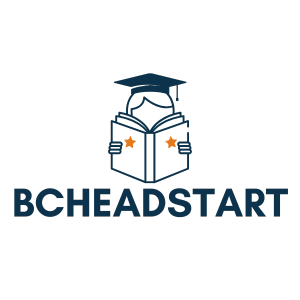Teaching reading isn’t just about sounding out letters and memorizing words; it’s about unlocking the magical world of stories and knowledge. Imagine a child’s face lighting up as they dive into a new adventure or discover a hidden treasure in a book. With the right methods, that spark can ignite a lifelong love for reading.
From phonics to whole language approaches, each method has its quirks and charms. Some might even say it’s like choosing a favorite pizza topping—everyone has their preference! The best part? There’s no one-size-fits-all solution. Educators can mix and match techniques to cater to different learning styles, ensuring every child finds their reading groove. So, let’s explore these methods and find out how to turn reading into an exciting journey rather than a chore.
Table of Contents
ToggleOverview of Methods of Teaching Reading
Teaching reading encompasses multiple methods that cater to diverse learning preferences. Phonics instructs learners on the relationship between sounds and letters. This method emphasizes letter-sound correspondence, allowing children to decode words systematically.
Whole language approaches focus on understanding meaning and context. Students engage with literature directly, promoting comprehension skills and encouraging a love for reading. This method highlights the importance of language experiences and relates reading to real-life contexts.
Balanced literacy combines elements from both phonics and whole language approaches. It incorporates reading, writing, speaking, and listening in an integrated framework. This method creates a well-rounded literacy program that supports various aspects of language development.
Guided reading provides targeted instruction by grouping students based on their reading abilities. During these sessions, educators offer support and feedback tailored to individual needs. This personalized approach promotes confidence and improves comprehension over time.
Literature circles engage students in collaborative learning experiences. Participants read, discuss, and reflect on texts together. These social interactions deepen understanding and encourage critical thinking skills.
Explicit instruction delivers clear, direct teaching strategies for enhancing reading skills. Teachers model strategies, explain their purpose, and provide guided practice. This approach ensures that students grasp essential reading concepts effectively.
Each method contributes uniquely to a comprehensive reading curriculum. Educators adapt their teaching styles to align with the needs of their students, enabling effective literacy development. Combining these approaches enriches the reading experience, making it both enjoyable and educational for every child.
Phonics Approach

Phonics represents a foundational method for teaching reading, emphasizing the connection between sounds and letters. This approach helps learners decode words effectively, enabling them to grasp reading concepts more readily.
Key Components
Key components of phonics include systematic instruction, sound-letter correspondence, and blending skills. Systematic instruction provides a structured framework that sequences the learning of sounds. Sound-letter correspondence bridges sounds with their written symbols, ensuring students can identify letters and their respective sounds. Blending skills involve combining individual sounds to form words, fostering fluency in reading.
Benefits of Phonics
Phonics offers several benefits that enhance reading skills. First, it improves decoding abilities, allowing students to pronounce unfamiliar words independently. Second, phonics builds confidence in young readers, as mastering this skill leads to a sense of achievement. Third, it enhances spelling skills due to the understanding of sound-letter connections. Finally, phonics lays a strong foundation for further literacy development, equipping learners for diverse reading experiences.
Whole Language Approach
The whole language approach emphasizes comprehension and meaning in reading instruction. By engaging with literature in context, this method fosters a love of reading.
Key Components
Key components of the whole language approach include immersion in authentic texts, collaborative learning opportunities, and a focus on meaningful communication. Students explore diverse genres and formats, encouraging their natural curiosity. Teachers facilitate discussions about the content, enhancing comprehension and critical thinking skills. This method values student choice, allowing learners to select books that interest them. Connections between reading, writing, and speaking create a holistic language experience.
Benefits of Whole Language
Benefits of the whole language approach include promoting a positive attitude toward reading and writing. Students develop confidence as they engage with real literature and their peers. This method supports vocabulary expansion through meaningful context rather than isolated memorization. Learners experience increased motivation and enthusiasm for literacy, which leads to improved fluency. Additionally, the approach nurtures higher-order thinking skills, preparing students for deeper comprehension in future reading experiences. Engaging with relevant content helps students relate their reading to the world around them.
Balanced Literacy Approach
Balanced literacy combines phonics and whole language elements, creating a comprehensive framework for teaching reading. This method acknowledges the diverse needs of learners and engages them through multiple techniques.
Key Components
Key components of balanced literacy include read-alouds, shared reading, guided reading, and independent reading. Read-alouds expose students to rich vocabulary and narrative structure. Shared reading promotes collaborative engagement with texts, allowing students to experience the reading process together. Guided reading focuses on small-group instruction tailored to individual reading levels. Independent reading fosters personal choice and encourages exploration of various genres. Each component strengthens comprehension and fluency through interactive and meaningful experiences.
Benefits of Balanced Literacy
Balanced literacy offers numerous benefits for students’ reading development. This approach enhances reading comprehension by integrating different instructional methods. Engagement increases as students connect with texts in varied ways. Building confidence in young readers occurs through personalized instruction and choice. Balanced literacy nurtures a lifelong love for reading by providing engaging and relevant materials. Overall, this method prepares students for academic success and fosters critical thinking skills.
Technology in Reading Instruction
Technology plays a crucial role in modern reading instruction, enhancing both teaching methods and student engagement. Digital tools provide innovative solutions that cater to diverse learning styles.
Digital Tools and Resources
Educators utilize a variety of digital tools to support reading development. Interactive e-books offer engaging visuals while promoting essential decoding skills. Applications such as Raz-Kids and Epic! provide personalized reading experiences, allowing students to explore texts at their own pace. Online platforms facilitate collaboration through shared reading and discussion forums. Multimedia resources like audiobooks further support auditory learners, making literature accessible to all. These tools encourage a deeper connection with texts, fostering a love for reading.
Impact on Learning
Technology significantly impacts learning outcomes in reading instruction. Studies show that students using digital tools demonstrate improved comprehension and engagement. Adaptive learning platforms adjust content based on individual progress, ensuring learners receive appropriate challenges. Students often experience increased motivation as they interact with dynamic resources. Additionally, technology allows for immediate feedback, enabling learners to track their own growth. By integrating technology, educators enhance traditional methods, creating a more effective and stimulating reading environment.
Teaching reading is a multifaceted journey that requires a blend of methods to truly resonate with each child. By embracing diverse approaches like phonics, whole language, and balanced literacy, educators can tailor their instruction to meet individual needs. The integration of technology further enriches this experience, making reading more engaging and accessible.
Ultimately, the goal is to instill a passion for reading that lasts a lifetime. With the right strategies in place, children can unlock the doors to countless stories and knowledge, paving the way for their academic and personal growth.

